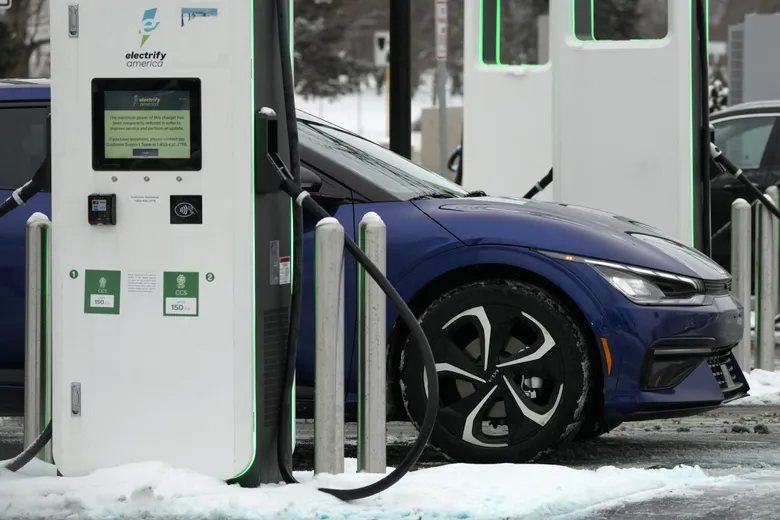In 2024, the electric vehicle (EV) landscape is experiencing a revolution, driven by the rapid expansion of fast-charging networks. According to Bloomberg Green, the number of fast-charging stations has increased by over 50% globally in the past year alone, a trend that is dramatically boosting EV adoption rates. This article will explore how these fast-charging networks are making electric vehicles more accessible and convenient for everyday drivers, and what this means for the future of sustainable transportation.
The Rise of Fast-Charging Networks
Why Fast Charging Matters
Fast-charging networks are essential for the widespread adoption of electric vehicles. Unlike traditional chargers, which can take several hours to fully charge an EV, fast chargers can replenish 80% of a vehicle’s battery in as little as 20 minutes. This convenience is comparable to a quick stop at a gas station, addressing one of the primary concerns potential EV buyers have: range anxiety.
- Speed and Convenience: Fast chargers, such as those provided by Tesla’s Supercharger network and ChargePoint, offer charging rates of 150 kW and above.
- Increasing Accessibility: According to InsideEVs, by mid-2024, there are over 30,000 fast-charging stations across the United States alone.
- Improving Technology: Newer models from brands like Rivian and Hyundai are capable of utilizing these high-speed chargers, making long-distance travel more feasible than ever.
Expansion of Charging Infrastructure
The expansion of fast-charging infrastructure is a global phenomenon. Countries like China and Germany are leading the charge with aggressive investments in EV infrastructure.
- China’s Dominance: As reported by Reuters Mobility, China plans to install over 100,000 new fast chargers by the end of 2024, solidifying its position as the largest EV market in the world.
- European Initiatives: The European Union has committed to installing fast chargers every 60 kilometers along major highways by 2025, according to AutoCar.
- U.S. Developments: The Biden administration’s infrastructure bill includes significant funding for EV charging stations, emphasizing the transition to cleaner transportation.
How Fast Charging is Changing EV Ownership
Reducing Range Anxiety
Range anxiety, the fear of running out of battery power before reaching a charging station, has long been a barrier to EV adoption. Fast-charging networks are effectively mitigating this concern.
- Strategic Locations: Charging stations are increasingly being placed at convenient locations, such as shopping centers and rest stops.
- Mobile Apps and Navigation: Companies like Tesla and Ford EV are integrating charging station locators into their navigation systems, making it easier for drivers to find the nearest fast charger.
Cost and Efficiency
Fast charging can be more cost-efficient than traditional charging methods, particularly when time savings are considered.
- Incentives and Discounts: Many charging networks offer discounts or free charging to attract users. For instance, Volkswagen’s Electrify America provides free charging credits with the purchase of a new EV.
- Energy Management: Advances in battery technology, reported by MIT Technology Review, allow for more efficient energy use, reducing overall charging costs.
Practical Tips for Using Fast-Charging Networks
How to Charge Effectively
- Plan Your Route: Use apps like PlugShare to locate fast chargers along your route.
- Optimize Charging Times: Avoid peak hours when chargers are busiest to ensure availability.
- Understand Your EV’s Capabilities: Not all EVs can handle high-speed charging. Check your vehicle’s manual for optimal charging specifications.
Where to Find Fast Chargers
- Major Highways: Fast chargers are commonly found at service stations along major highways.
- Urban Centers: Cities are increasingly installing fast chargers in public parking areas.
- Shopping and Dining Locations: Many malls and restaurants are adding fast chargers as an amenity to attract EV drivers.
What to Compare When Buying an EV
- Charging Speed Compatibility: Ensure the EV you choose is compatible with the latest fast-charging technology.
- Range and Battery Size: Consider the vehicle’s range and how often you’ll need to charge based on your driving habits.
- Network Coverage: Check the availability of fast chargers for your EV brand in your area.
Conclusion: The Future of EV Adoption
Fast-charging networks are not just transforming how we drive, but how we think about transportation altogether. By reducing range anxiety and making EVs more practical for everyday use, they are accelerating the shift towards a more sustainable future. As infrastructure continues to grow, and technology advances, we can expect to see even greater adoption of electric vehicles worldwide.
Are you considering making the switch to an electric vehicle? With the rapid expansion of fast-charging networks, there has never been a better time to embrace this cleaner, greener mode of transport. What are your thoughts on the future of EV adoption? Share your views and join the conversation on how we can all contribute to a more sustainable planet.

